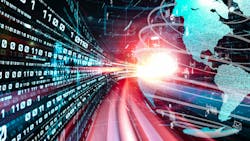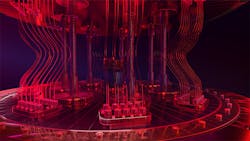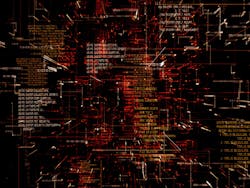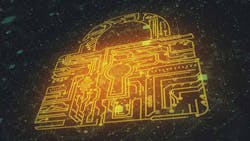Quantum Computing, Software Quality, and Security Will Intensify in 2023
This article is part of the 2023 Electronic Design Technology Forecast issue.
What you'll learn:
- How quantum technology will impact everything from fuel efficiency to meteorological predictions.
- Autonomous test designs and digital twins.
- The rise of deepfakes and increased hacking.
The deepening data divide will determine enterprise winners and losers. While monetizing data insights has been an elusive goal for many organizations, the maturation of artificial-intelligence (AI) technologies is finally making it possible for companies to organize and actualize their information.
The next five years will see such efforts accelerate, and organizations that can successfully act on their data will thrive. CIOs at these organizations will favor solutions with four factors: low code extensibility, intuitive user experience, and prolific APIs for maximum composability, all culminating in breakthrough analytical insights. Those who fail to embrace these capabilities will be mired in an Excel wormhole—the negative financial and competitive consequences of which will be difficult to escape.
Digital dexterity outside the IT function will rise to levels where entire organizations will have basic software-development skills. These progressive organizations will differentiate through data science.
In 2023, automation will remain unaffected, despite economic uncertainty. And in the coming years, the state of automation and systems will increasingly impact retention. Employees will seek out organizations with intelligent automated systems that allow them to focus on more rewarding and creative tasks. Those enterprises who don’t play ball, remaining manual-first, will find it harder to compete for talent.
Software development will go to the robots. We’ve become accustomed to text predictions in our digital communication, but people may be surprised to learn that these capabilities also exist in software development. Some environments have bots suggesting how to finish code, which will become increasingly common in the years ahead. By 2028, more than half of the world's software code will be written by bots as opposed to people.
The blending of physical and virtual worlds will usher in a new era of efficiency. 2023 will see significant advancement in the form of digital twins being superimposed on physical systems. This will bring numerous benefits to various sectors, ranging from healthcare to manufacturing to retail.
For example, imagine if a surgeon could operate with an AI assistant providing input on human anatomy and patient history instead of having to recall these details from memory. This sounds futuristic, but work is already underway to make this a reality. Expect to see more companies cropping up next year to help further blur the line between the physical and virtual worlds.
Enter the Quantum World
Quantum computing is poised to accelerate complex design processes. In the airline industry, it's not uncommon for companies to spend 25 years designing a new polymer that will make planes more fuel-efficient, resistant to temperatures, etc. Quantum will significantly accelerate this and other material science design timelines. Rather than spending their entire career on one design cycle, employees will be able to complete the process in a matter of years.
It’s time to take the quantum leap into the climate change battle. Once quantum demonstrates an advantage, it will increasingly be channeled to help fight climate change. Examples include improving decision-making through complex modeling and predictions and helping ensure compliance with emission standards.
Before the end of the next decade, quantum will enable meteorologists to better predict the trajectory of hurricanes, winter storms, and other weather events. This will allow communities to better plan and remove any element of guesstimates in determining whether to mandate evacuations or shelter in place. As a result, the loss of life associated with hurricanes and other natural weather-driven disasters will be reduced.
Quantum navigation will illuminate remote areas. Quantum technology can facilitate navigation in remote areas with minimal satellite coverage, but cost is currently a barrier to adoption. This will begin to change as quantum becomes more prevalent and affordable. I believe that we'll see emergency vehicles equipped with quantum sensors within the next decade—with consumer vehicles eventually following suit.
The U.S. is currently leading the quantum-computing industry, but by the end of the decade, Europe will reach parity. Increasing privacy regulations is one major driver behind Europe's growth, as having quantum-computing capabilities in the region will make it significantly easier to comply with these mandates.
In addition, European quantum companies have seen the largest venture rounds and the plethora of universities throughout the continent provide a talent pipeline that can be tapped to fuel new quantum opportunities and use cases. As a result, the U.S. quantum industry will feel increasing pressure to maintain its competitive advantage.
After decades-long hype around quantum computing and quantum systems, the industry will start to realize its potential for creating new opportunities in fields spanning cybersecurity, materials creation, financial analysis, and military receivers.
Proactive companies will start investing in quantum, fostering quantum talent within the next generation of workers through university partnerships, hackathons, and other projects. This will create an ancillary boost to DEI initiatives resulting in much-needed diversity in the tech workforce.
Recent research revealed that 74% of companies believe they will fall behind if they fail to adopt quantum. As a result, organizations will begin to shift their thinking that quantum is a futuristic technology and begin addressing key challenges, including financial resources and operations and developing real enterprise applications of quantum by 2026, if not sooner.
Test, Test, Test, and Virtualize
Traditional test automation still requires that the tests themselves are manually written. Model-based approaches allow tests to be generated from the central model; autonomous test design takes the next step and automatically generates these models.
This means that the model is auto-generated as a “digital twin” of the system to be tested, and from there the actual tests are auto-generated and executed. This further simplifies and optimizes testing to improve quality and reduce release times. As a result, it will become the de facto approach to testing in 2023.
Traditional test automation is based on the need to run a large number of fixed tests at defined periods (overnight, weekends, and prior to a release, for example). The execution of each test requires significant computing power and thus has both an energy cost and an environmental impact.
With the increase in energy prices and the greater awareness of sustainability, such a legacy approach of “non-intelligent” test automation will be replaced by intelligent test optimization. Here, the goal is to only run the tests that are known to identify a problem.
Vendors need to maintain multiple different channels to engage with customers. The web and mobile are the most common, but there are also dedicated mobile apps, kiosks, IoT devices, ATMs, set-top boxes, etc.
In 2023, expect more conversation around the Metaverse as a significant channel for future customer interaction. This adds a significantly different type of channel for vendors to design, build, and test for, meaning that most will need a mobile app, a website and a metaverse implementation. Non-fungible tokens (NFTs) can be attributed to Metaverse environments, providing a new way to deliver products and services. Testing the Metaverse adds significant challenges for most test-automation technology, which in turn will accelerate innovation in that space.
AI will provide assurance of quality and behavior. With the increasing complexity of a digital-first world, digital products will come under greater scrutiny. This is already high for safety-critical systems, but expect it to increase in all areas in 2023. The contents of the product, including all constituent parts and third-party components, must be itemized and certified, ensuring that all constituents are authentic and original.
As products become more intelligent and AI proliferates across systems and devices, their behavior becomes more nuanced and complex. The testing of these systems needs a more intelligent technology to understand the responses and validate against acceptable behavior, resulting in the need to use AI to test AI.
2023 may see the rise of the citizen developer. With an increasingly digital-savvy population, traditional non-technical audiences are becoming technically proficient and confident in using more complex systems.
Combined with advances in user experience design and usability improvements, these new non-technical users can develop for their specific needs through low-code or no-code technology. In many cases, they can remove the need for a separate requirements document for a technical team to implement. This reduces time-to-delivery and the risk of misinterpretation, and increases overall efficiency.
Securing the Digital World
AI will help developers be on the offense. Deepfake technology to date has resulted in political confusion, internet chatter, and some amusing mashup videos, but expect this to change in the near term. Security experts have warned for years about the possibility of social-engineering attacks with deepfakes, and the technology has matured enough for 2023 to see hackers successfully leverage it.
We will see an increase in image generation, generated audio, and conversations that appear realistic, designed to trick recipients into sharing personal data or other sensitive information. The deepfake threat isn't relegated solely to consumers—we’ll likely see threat actors spoof a Fortune 100 CEO in an attempt to defraud or otherwise damage the organization.
Beware of hackers in your home. With the increased adoption of IoT devices, hackers will no longer be nameless, faceless entities but rather a tangible threat within our smart homes. Expect threat actors to infiltrate webcams, microphones, smart TVs, and other connected devices, demanding money transfers or bank account details. As this happens, IoT manufacturers will have to formulate their response to IoT-based extortion.
The hackers’ end game is now physical damage. Hackers may have traditionally abided by a quasi-code of ethics to limit physical destruction, but those days are long gone. Expect 2023 to see more targeted OT attacks designed to disable or destroy system availability with the end goal of harming people. For example, ransomware attacks against life-saving equipment in the healthcare sector will become fair game.
The cyber insurance industry will be evolving. Historically, cyber insurers have embraced a yes/no approach to coverage based on the company's maturity level and the types of threats facing the organization. Expect this to evolve in 2023, with insurance companies declining to cover more enterprises as well as introducing risk-based pricing in response to the dynamic threat environment. I believe we'll see more exemption clauses denying coverage for ransomware and other specific attack types.
Read more articles in the 2023 Electronic Design Technology Forecast issue.



